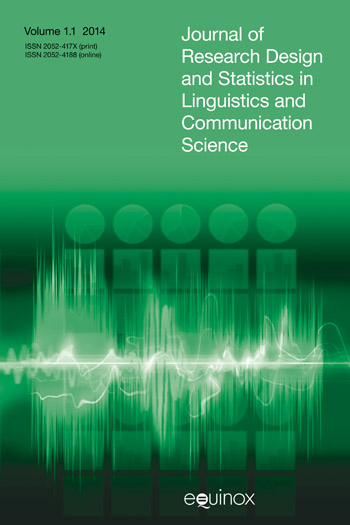Hidden Generalizations
Phonological Opacity in Optimality Theory
John J. McCarthy [+–]
University of Massachusetts, Amherst
John J. McCarthy is Senior Vice Provost for Academic Affairs, Dean of the Graduate School, and Distinguished University Professor at the University of Massachusetts Amherst. He is the author of Hidden Generalizations: Phonological Opacity in Optimality Theory (Equinox 2007).
Hidden Generalizations is the first monograph devoted exclusively to the problem of phonological opacity. Opacity arises when the conditions for or results of an active phonological process are not evident in the speech signal. Opacity is particularly important in Optimality Theory, which lacks the standard means of analyzing opacity, rule ordering.
This book is a thorough reexamination of phonological opacity. It finds insights in the extensive literature on rule interaction of the 1970s. It describes and critiques the oft-voiced opinion that there are no authentic cases of opacity. It evaluates representational approaches to opacity that emerged in the 1980s. Primarily, though, it discusses various ideas about opacity in OT and offers a new proposal, candidate chain theory. This proposal is illustrated and tested with analyses of the phonology of several Semitic languages.
Series: Advances in Optimality Theory
Table of Contents
Prelims
Acknowledgements [+–] vii
Hidden Generalizations is the first monograph devoted exclusively to the problem of phonological opacity. Opacity arises when the conditions for or results of an active phonological process are not evident in the speech signal. Opacity is particularly important in Optimality Theory, which lacks the standard means of analyzing opacity, rule ordering. This book is a thorough reexamination of phonological opacity. It finds insights in the extensive literature on rule interaction of the 1970s. It describes and critiques the oft-voiced opinion that there are no authentic cases of opacity. It evaluates representational approaches to opacity that emerged in the 1980s. Primarily, though, it discusses various ideas about opacity in OT and offers a new proposal, candidate chain theory. This proposal is illustrated and tested with analyses of the phonology of several Semitic languages.
1
This book’s principal argument is that the best theory of opacity is a synthesis of Optimality Theory with derivations. It argues that a candidate in Optimality Theory includes not just a surface form but also a series of intermediate forms, each of which is minimally different from the form that immediately precedes it.
2
This chapter begins by explaining what opacity is and how it is analyzed in rule-based phonology. The discussion then turns to a description of ‘classic’ Optimality Theory, the problems that opacity presents for classic Optimality Theory, and various ideas about how to modify the classic theory to accommodate it. The chapter ends with the conclusion that there is something fundamentally correct about rule-based phonology’s serial derivation.
3
Candidate chains and phonological opacity [+–] 59-143
This chapter develops a modification of classic Optimality Theory. The central point of difference is a change in the definition of candidates: instead of being single output forms, candidates are chains of forms that link the input and output by minimal phonological differences. Candidate chains approximate the steps in a derivation in classic generative phonology.
4
Two Case Studies [+–] 145-210
This chapter presents two extended case studies of phenomena in languages that have abundant opaque interactions. These case studies involve opaque interactions of processes whose phonological status is not in doubt — most are exceptionless, productive, and applicable in borrowed words, external sandhi, or language games.
5
Postscript [+–] 211-212
This chapter restates the main argument of the book that opacity is an authentic property of human language, as well as the future possible work on this topic.
End Matter
References [+–] 213-239
Hidden Generalizations is the first monograph devoted exclusively to the problem of phonological opacity. Opacity arises when the conditions for or results of an active phonological process are not evident in the speech signal. Opacity is particularly important in Optimality Theory, which lacks the standard means of analyzing opacity, rule ordering. This book is a thorough reexamination of phonological opacity. It finds insights in the extensive literature on rule interaction of the 1970s. It describes and critiques the oft-voiced opinion that there are no authentic cases of opacity. It evaluates representational approaches to opacity that emerged in the 1980s. Primarily, though, it discusses various ideas about opacity in OT and offers a new proposal, candidate chain theory. This proposal is illustrated and tested with analyses of the phonology of several Semitic languages.
Index [+–] 241-244
Hidden Generalizations is the first monograph devoted exclusively to the problem of phonological opacity. Opacity arises when the conditions for or results of an active phonological process are not evident in the speech signal. Opacity is particularly important in Optimality Theory, which lacks the standard means of analyzing opacity, rule ordering. This book is a thorough reexamination of phonological opacity. It finds insights in the extensive literature on rule interaction of the 1970s. It describes and critiques the oft-voiced opinion that there are no authentic cases of opacity. It evaluates representational approaches to opacity that emerged in the 1980s. Primarily, though, it discusses various ideas about opacity in OT and offers a new proposal, candidate chain theory. This proposal is illustrated and tested with analyses of the phonology of several Semitic languages.








